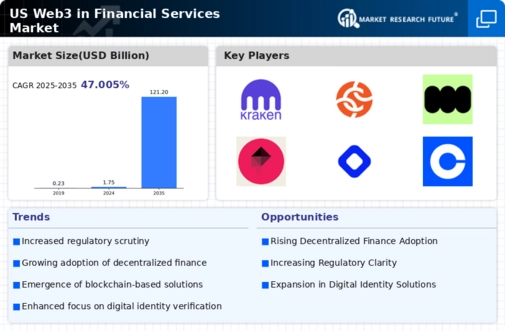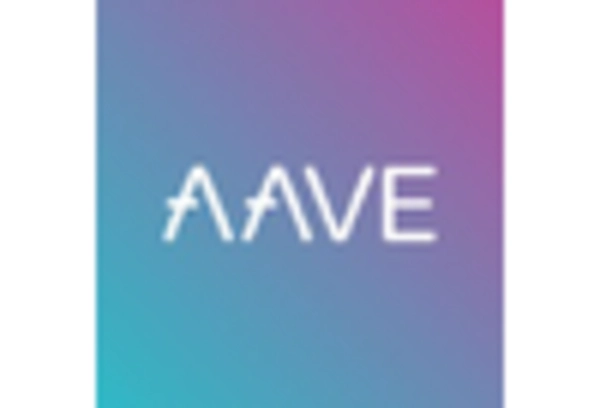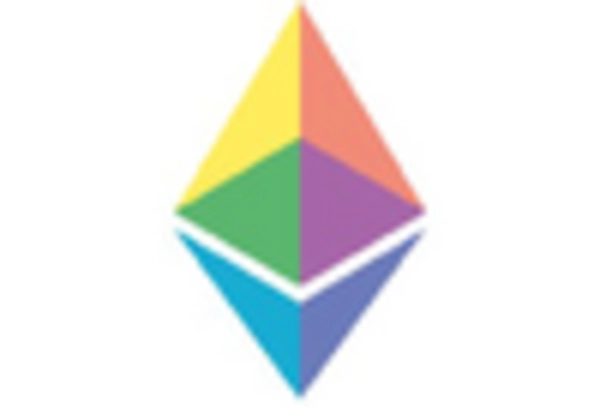The web3 in-financial-services market is currently characterized by a dynamic competitive landscape, driven by rapid technological advancements and evolving consumer preferences. Key players such as Ethereum (CH), Ripple (US), and Uniswap (US) are at the forefront, each adopting distinct strategies to enhance their market positioning. Ethereum (CH) continues to innovate with its smart contract capabilities, focusing on scalability and interoperability, which are crucial for attracting decentralized finance (DeFi) applications. Ripple (US), on the other hand, emphasizes partnerships with financial institutions to facilitate cross-border payments, thereby solidifying its role in traditional finance integration. Uniswap (US) leverages its decentralized exchange model to enhance liquidity and user engagement, positioning itself as a leader in the DeFi space. Collectively, these strategies contribute to a competitive environment that is increasingly focused on innovation and user-centric solutions.
In terms of business tactics, companies are increasingly localizing their operations and optimizing supply chains to enhance efficiency and responsiveness. The market structure appears moderately fragmented, with a mix of established players and emerging startups vying for market share. This fragmentation allows for diverse offerings and fosters competition, compelling companies to continuously innovate and refine their services to maintain relevance.
In October 2025, Ripple (US) announced a strategic partnership with a major banking consortium to enhance its cross-border payment solutions. This collaboration is expected to streamline transaction processes and reduce costs, thereby increasing Ripple's appeal to traditional financial institutions. The strategic importance of this move lies in its potential to expand Ripple's market reach and solidify its position as a leader in the integration of blockchain technology within conventional banking frameworks.
In September 2025, Uniswap (US) launched a new governance model aimed at increasing community participation in decision-making processes. This initiative is significant as it not only empowers users but also enhances the platform's decentralization, which is a core tenet of its operational philosophy. By fostering a more engaged user base, Uniswap (US) is likely to strengthen its competitive edge in the DeFi market.
In August 2025, Ethereum (CH) unveiled a major upgrade to its network, enhancing transaction speeds and reducing gas fees. This upgrade is crucial for maintaining Ethereum's dominance in the smart contract space, as it addresses scalability issues that have previously hindered user adoption. The implications of this upgrade are profound, as it positions Ethereum (CH) to better compete against emerging blockchain platforms that offer similar functionalities.
As of November 2025, the competitive trends in the web3 in-financial-services market are increasingly defined by digitalization, sustainability, and the integration of artificial intelligence (AI). Strategic alliances are becoming more prevalent, as companies recognize the value of collaboration in navigating the complexities of the evolving landscape. Looking ahead, competitive differentiation is likely to shift from price-based strategies to a focus on innovation, technological advancements, and supply chain reliability. This evolution suggests that companies must prioritize not only their technological capabilities but also their ability to adapt to changing market demands and consumer expectations.

















Leave a Comment